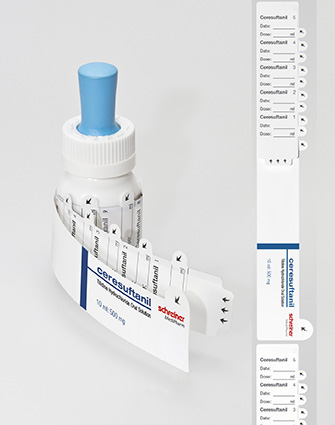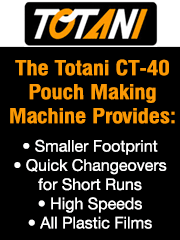Pharma-Comb Label Has 10 Detachable Parts
- Published: July 01, 2015
BLAUVELT, NY | Schreiner MediPharm has developed a sophisticated label with a total of ten detachable parts. Part of the company’s Pharma-Comb series of products, the label is functionally designed for easy documentation and tracking of medications.
Schreiner MediPharm initially created the new ten-part label with an eye toward analgesic (pain reliever medication) administration. Proper pain relief treatment—as with any dosed regimen—depends upon clearly labeled medicines and comprehensive documenting of their administration.

For a highly effective analgesic housed in small plastic containers and drawn using a pipette, a pharmaceutical customer needed a label with a particularly large number of detachable parts. The resulting Pharma-Comb label consists of an innovative two-layered construction offering sufficient space for product information and ten consecutively-numbered label parts. Each detachable part contains fields where the date and administered dosage can be entered by hand.
The ten-part label, which is wrapped around a container, can be easily opened and resealed by users. Convenient starter tabs simplify the handling of both layers, and also make for simple detachment of label parts—even when wearing gloves—allowing healthcare providers an easy means of placing individual adhesive labels in patient records.
The Pharma-Comb product family helps ensure precise, efficient documentation of medications in patient records, and simplifies routine medical care in practices and hospitals. Pharma-Comb labels include one or more detachable parts that are printed with important information and, if necessary, also allow physicians or nurses to add additional hand-written data.
“As part of Schreiner’s Pharma-Comb family of solutions, the new ten-part label facilitates quick and safe documentation and guarantees reliable tracking of medications,” said Gene Dul, president of Schreiner MediPharm US. “Among other benefits, the danger of possible overmedication is minimized—a crucial element especially when dealing with medicines that often are regularly dosed, such as analgesics.”












